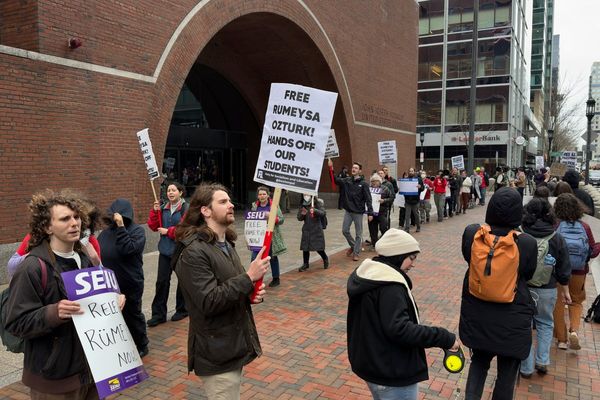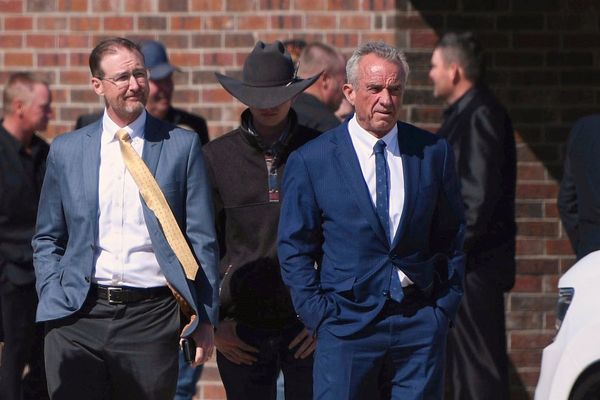
Baseball’s lockout threatens to deny fans their enjoyment of the game. For Sox fans, it threatens to deny their enjoyment of a contending team.
In particular, it blocks the joy of watching center fielder Luis Robert, the type of player who — forgive the tired but fitting cliché — is worth the price of a $52 seat on a Saturday afternoon.
At 24, Robert already is being talked about as an American League MVP candidate for 2022. That seems like a stretch for someone who has all of 124 major-league games under his belt and still is learning how to manage the strike zone. But while his walk rate dropped from 9% to 5% last season, Robert’s strikeout rate also dropped, from 32% to 21%, and you don’t have to be a major-league scout to recognize his tools.
“He’s a great talent, a great athlete and a really good center fielder, and he has all the tools — great tools,” one AL scout said. “It will be interesting to see how he matures and learns to control the strike zone, and how much better he can get.”
It doesn’t seem like hyperbole to say Robert stands a good chance of becoming the best center fielder in Sox history, and he might even establish that before his $50 million contract runs out after the 2025 season. The Sox, who wisely signed him for multiple years in 2020 — before he was eligible for salary arbi-tration and free agency — hold club options for 2026 and 2027 at $20 million each year.
So Robert should be here for your viewing pleasure for a good, long time.
At 6-2, 220 pounds, with his proudly Instagrammed six-pack and a physique resembling that of an Under Armor mannequin, Robert is a sight to see, whether he’s blasting “How far did it fly?” home runs, topping 115 mph exit velocities on line drives, showing his strong arm or covering the expanses of the outfield to either side with good reads, grace and premium speed.
“What a weapon for us,” manager Tony La Russa said.
And Robert has demonstrated a flair for rising to the moment, hitting safely in all seven postseason games he has played in, with a .393 batting average.
Two springs ago, fellow Sox outfielder Eloy Jimenez said Robert was the next Mike Trout. Hall of Famer Frank Thomas called him a six-tool player.
“There are times when you feel like you can do everything on the field and you can dominate,” Robert said through a translator after hitting homers that traveled 415 feet to center and 445 feet to left in a Sox victory last season.
He certainly has performed. During his rookie season in 2020, a 136/.273/.173 hitting line in September cost him the AL Rookie of the Year Award (he finished second to the Mariners’ Kyle Lewis), but he secured the Gold Glove for center fielders and pole-axed a 471-foot homer in Game 1 of the wild-card series against Athletics right-hander Mike Fiers. After finishing that season .233/.302/.436 with 11 homers, 31 RBI and nine stolen bases in 56 games, he played in 68 games last season, slashing .338/.378/.567 with 13 homers, 22 doubles, 43 RBI and six stolen bases.
From May 3 to Aug. 9, he was out with a torn hip flexor, and therein lies the magic potion to keeping him in the conversation for MVP and all-time best Sox center fielder: avoiding injuries. Signed to a $26 million bonus out of Cuba in 2017, Robert dealt with knee, ankle and thumb injuries during his minor-league development years. His career high for games in a season is 122 over the Class A, Double-A and Triple-A levels. His 68 games in 2021 comes in second.
To be known as the best at his position in franchise history means surpassing the likes of Johnny Mostil, Jim Landis, Chet Lemon, Lance Johnson and Ken Berry. According to Baseball Reference, Mostil (1918-29) was the best Sox center fielder, hitting .301/.386/.427 and finishing as runner-up for AL MVP in 1926. Landis (1957-64) won five Gold Gloves. Lemon (1975-81) had two All-Star appearances and 216 extra-base hits in a four-year span. Johnson (1988-95) ranks fourth for the Sox all-time with 226 stolen bases and seventh with 77 triples. And Berry (1962-70) was an All-Star and Gold Glover.
Stay tuned.
As good as he is, Robert still has a lot of maturing to do at the plate. The question now is, just how high is his ceiling? If he learns to manage the strike zone, it’s like the scout said: “Look out, man.”







